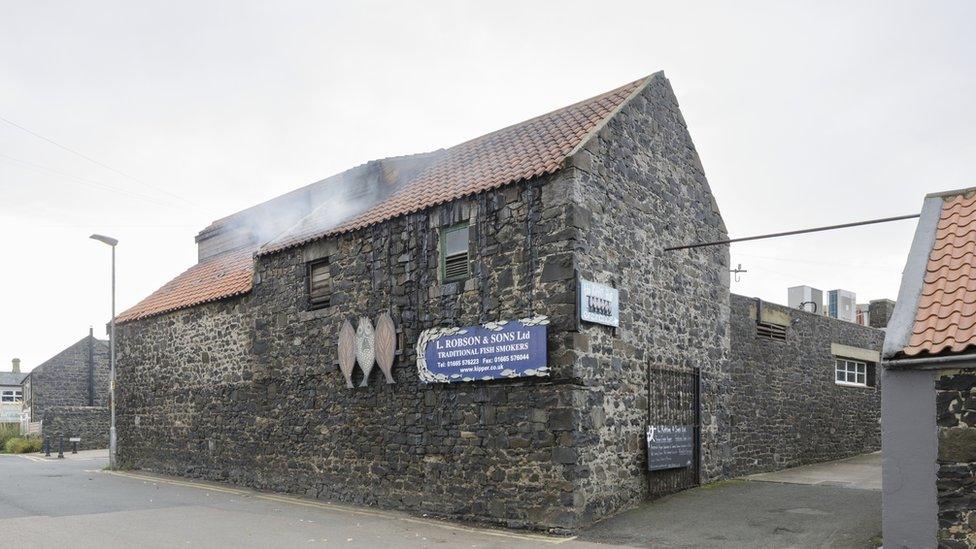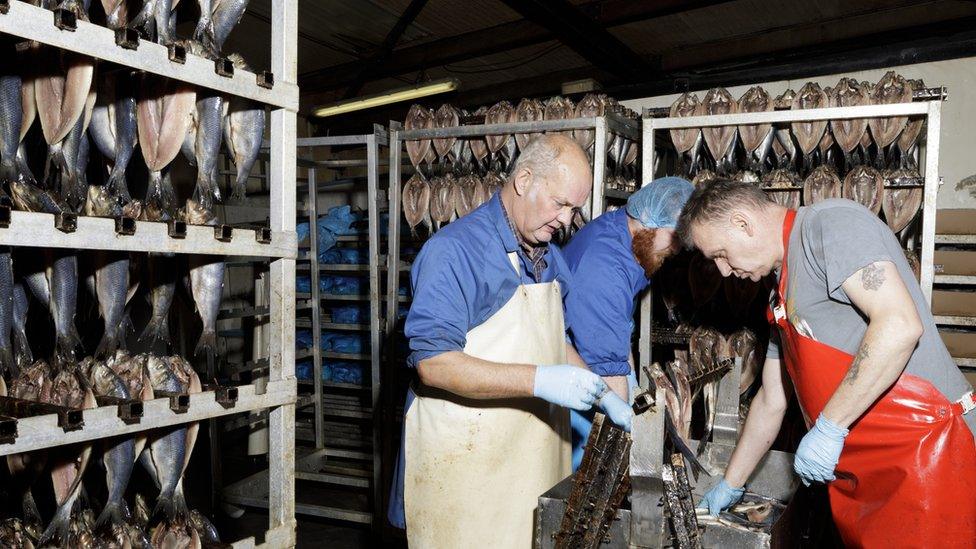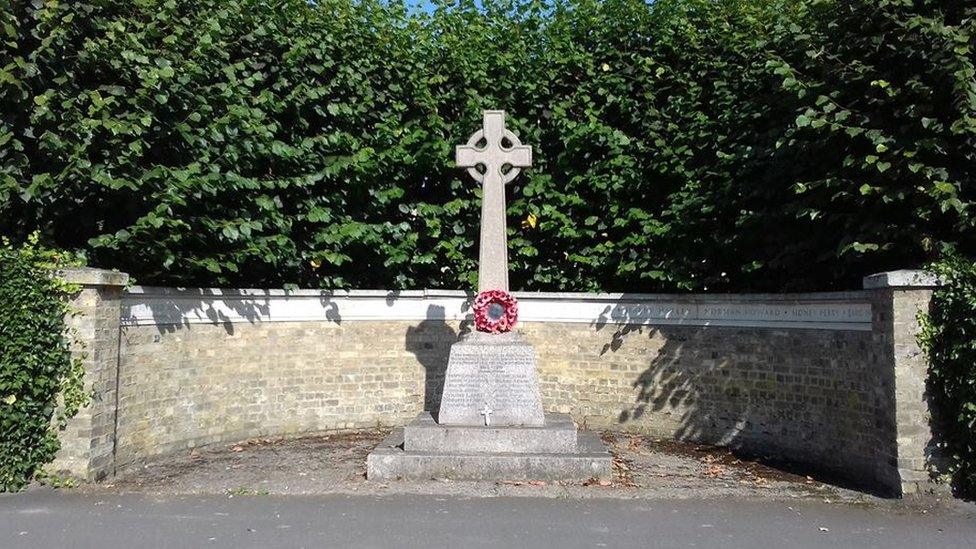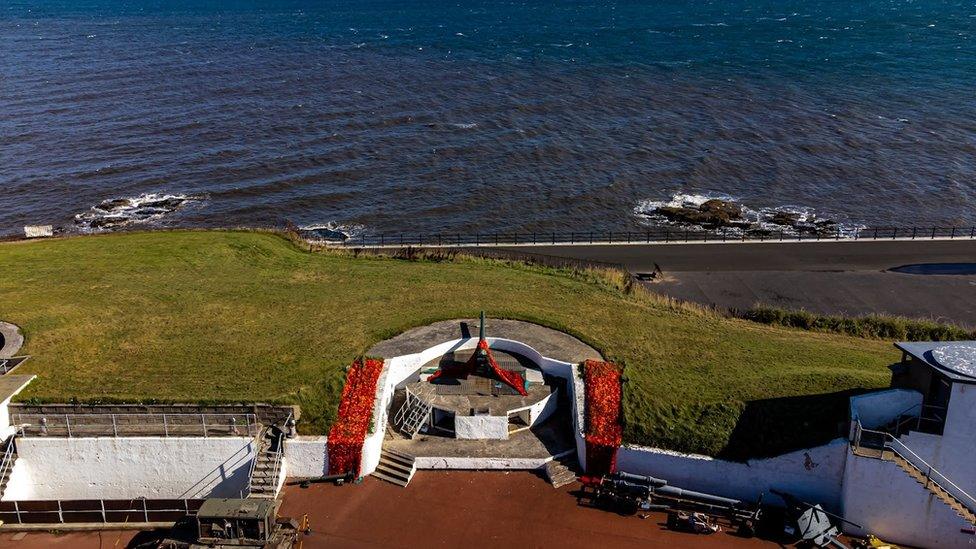Northumberland kipper smokehouse given Grade II listed status
- Published

The smokehouse is the only surviving fish curing business in Craster
A 19th-Century smokehouse used for producing kippers has received Grade II listed status.
The smokehouse, in Craster, Northumberland, was built in 1856 and has been in the same family for more than 100 years.
Neil Robson, who runs the business, said he was "delighted" the building had been granted listed status.
Historic England said the smokehouse was a "living monument" to the North East fishing industry.
It has been owned by the Robson family for four generations after Mr Robson's great-grandfather James Robson bought the building in 1906.
His great-grandson now runs the business, L Robson & Sons, which, is the only surviving fish curing business in the village and still produces Craster kippers the traditional way.
"As the fourth-generation custodian of this business, I am delighted that the smokehouse has been granted listed status," Neil said.
"This historic building enables us to continue to produce Craster Kippers in the same way as my great-grandfather and subsequent generations, guaranteeing their quality for many years to come."

The smokehouse has been described as "living monument" to the region's fishing industry
The smokehouse is a rare surviving remnant of the North East's once thriving herring industry.
From the mid 19th to the early 20th Century, there were herring yards in almost every coastal town and village in the region.
Most of the fresh fish was pickled or cured in smokehouses and then transported to other domestic and European markets.
But the 1920s and 30s saw the herring business along the east coast decline as fresh fish became cheaper due to rail transport and refrigeration.
Sarah Charlesworth, from Historic England in the North, said kippers were "an integral part of Craster's cultural identity".
"The smokehouse is a physical embodiment of the village's special character, as well as a living monument to the North East's historic fishing industry," she added.

Follow BBC North East on Facebook, external, X (formerly Twitter), external and Instagram, external. Send your story ideas to northeastandcumbria@bbc.co.uk, external
Related topics
- Published10 November 2023

- Published9 November 2023

- Published1 November 2014
